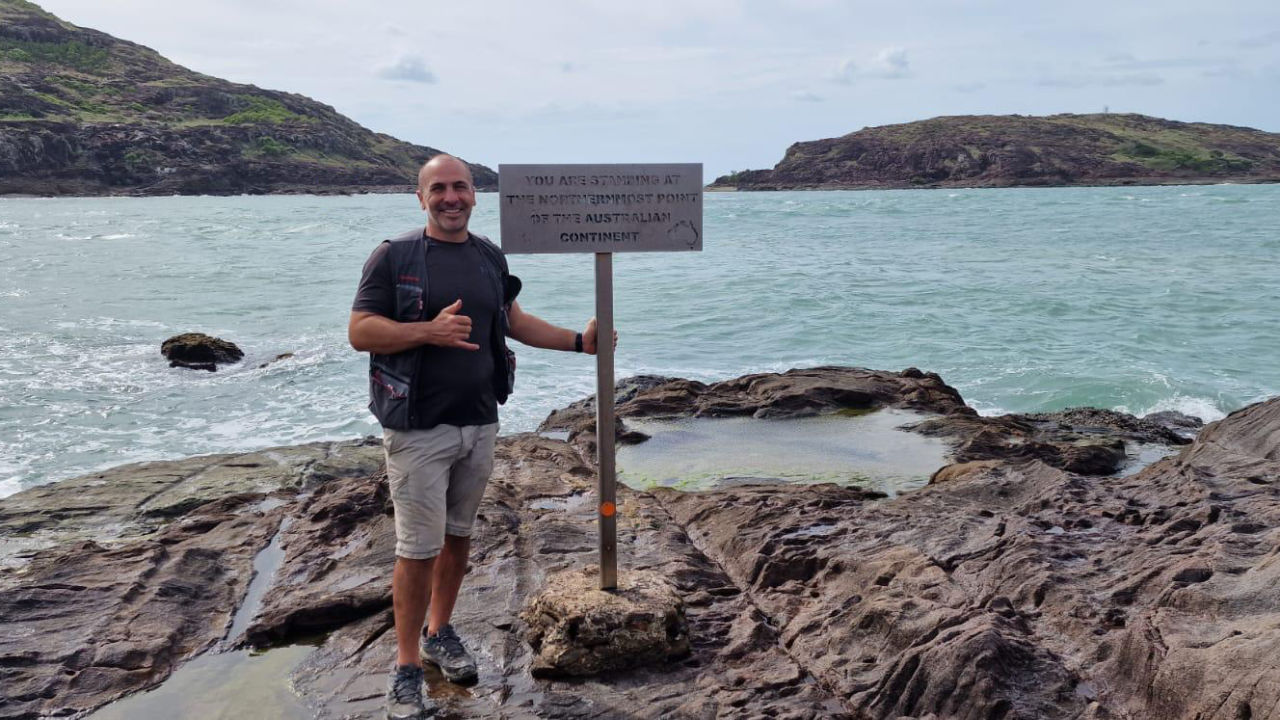People of the Reef ·
Daniele Cagnazzi: ‘We’re discovering more about the Reef’s elusive dolphins’
Daniele is helping collect valuable data on the Reef’s most iconic dolphin species.

The passionate people who work hard to protect the Great Barrier Reef come from all walks of life and from all around the world. They are united by their wonder and love for this iconic ecosystem and its inhabitants. How they come to work on the Reef is often circuitous and fortuitous, and Daniele Cagnazzi’s story is no exception.
Daniele grew up a long way from Australia, in a small town named Lodi near Milan in northern Italy. He was raised far from the sea, so aspiring to be a marine scientist felt like a distant dream. However, Daniele cultivated his passion for the ocean and its creatures through trips with his family where he got to experience the wonders of the underwater world firsthand.
When he finished school he moved to Ravenna, a town on the Adriatic Sea, to study Environmental Science and Management with a focus on marine biology. This was the first time he’d been surrounded by people who shared his same interests.
“I realised it was possible to have a career in marine science,” he said.
Fast forward 20 years and Daniele is now a Research Fellow at Southern Cross University studying dolphins.
“Often the best things in life are unplanned. After completing university in Italy, I moved to Australia for my PhD without having a defined project yet. It was really a series of unexpected events that brought me to work on the Great Barrier Reef and specifically with inshore dolphins. In all honesty, I couldn’t believe it. I had spent so many hours of my childhood watching documentaries and dreaming of the Great Barrier Reef,” he said.

Daniele is currently leading the Great Barrier Reef Dolphin Project.
The Reef is visited by over 30 species of aquatic mammals, yet little is known about two in particular: the Australian humpback dolphin and the snubfin dolphin. These species live close to the coast and are typically found in small groups near estuaries, rocky reefs and sheltered bays.
Marine mammals such as dolphins are protected in Australian waters, but their future remains uncertain. They are threatened by human pollution, habitat degradation and climate change.
Daniele has spent the last 18 years studying these dolphins. Through his work and research, he aims to better understand the dolphins’ distribution and numbers, as well as assess threats they’re facing to better inform conservation efforts, filling a key data gap for these iconic species.
He is currently leading the Great Barrier Reef Dolphin Project, funded through the Integrated Monitoring and Reporting component of the partnership between the Australian Government’s Reef Trust and the Great Barrier Reef Foundation.
Through this project, the team will be using a suite of multidisciplinary survey methods to capture a snapshot of the abundance and distribution of inshore dolphins along the northern Great Barrier Reef. The study area between Port Douglas and Cape York is regarded as some of the most pristine and unexplored sections of the Reef. The methods include carrying out visual surveys on boats, using citizen science to collect data, as well as spatial modelling.
Close-up of a group of snubfin dolphins socialising off the coast of North Queensland. Credit: Daniele Cagnazzi.
Daniele has consulted and worked with the Traditional Owners on whose sea Country he will be carrying out his research. Throughout this process, he has organised in person workshops and information sharing sessions to facilitate discussion, and gain consent for this important work.
“Over the last two years I met with more than 15 Traditional Owners groups between Cairns and Cape York. It has been an incredible journey of personal development that changed the way I think about land and sea,” he said.
Traditional Owners will also be supporting Daniele in the field surveys this year, taking part in research on their Country. This truly collaborative effort is a brilliant example of how researchers working with Traditional Owners to collect data on and protect marine species.
This process has given Daniele the chance to visit the beautiful land and sea Country of the Traditional Owners of northern Queensland, giving him a newfound appreciation for these habitats and the species that call it home.
“When you ask people what the Great Barrier Reef is, most will think of the beautiful aerial images or underwater photographs, pristine beaches, infinite coral reefs and dreamy islands. But the Great Barrier Reef is much more than that. The coastal murky waters, river systems and large mangroves forests, although not appealing to most, are home to incredible marine and terrestrial biodiversity. To me these areas are as beautiful as the well-known colourful reefs.”

Daniele hopes the Dolphin project will help shed light on snub nose dolphins.
When asked what Daniele’s favourite animals are, it’s no surprise he chose snubfin dolphins.
“Most people who read this article probably do not know about them. We know very little about their life on the Reef. Hopefully our project will help shed light on this elusive species,” he said.
This is exactly why his project is so important. His team is currently gearing up for the next round of surveys, hoping to collect vital information on these dolphins. Like many ocean-based activities however, the success of these surveys may be dictated by timings and good weather windows, but this doesn’t discourage Daniele.
“I was always interested in conservation and seeing that my work has a direct impact on the protection of threatened species motivates me to keep going despite all the challenges,” he said.
Daniele’s passion is contagious, and he’s a huge advocate for the protection of our precious Reef.
“The Great Barrier Reef is the heart of many people, it makes people dream. Even if you never see it in your lifetime, you still know it is there and that brings a sense of peace.”




